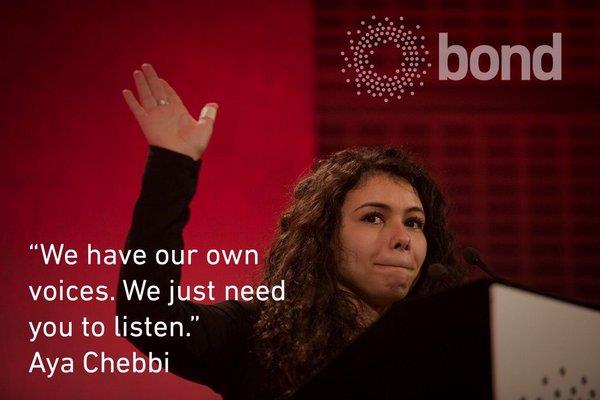In an effort to create conversations between the Global South, the KIP Index Project at the American University of Beirut (AUB) summarise their findings for a new working paper on Women Economic contributions in MENA economics.

Female labor force participation rates in the Middle East and North Africa (MENA) remains one of the lowest in the world despite growing evidence that giving women equal access to jobs boosts Gross Domestic Product (GDP) and contributes to long-term inclusive growth. While females in the region have almost closed the gender gap with their male counterparts in terms of education, Arab women still suffer from high unemployment rates compared to other regions of the world. Over the past years, MENA countries have achieved tremendous progress in terms of gender equality in education. Paradoxically, this increase in education did not lead to an increase in economic participation for women: This phenomenon is known as the “Middle Eastern Paradox”. Why does this discrepancy exist? Why are Arab women not fully engaged in the economy?
This article relies on ‘indigenous’ knowledge to identify the barriers deterring Arab women from entering the workforce, as well as the factors that hinder their career progression. Indigenous knowledge is nuanced and takes into account the details and intersectionalities of Arab women. It takes into account their agency, autonomy and independence within their particular contexts, in contrast to representing Arab women as one “homogeneous”, disempowered collective. Highlighting the local barriers that Arab women face, is affirming the heterogeneous nature of women’s labor force participation: not all women experience being employed the same way, and not all the barriers affect them equally. More importantly, barriers facing Arab women are specific to them, and are not experienced similarly by women from the first world and developing countries.
Contentious opportunities
Nowadays, the Arab region is witnessing government initiatives that call for policy reform to boost female participation in the formal economy. Many Arab countries started to implement strategies to increase female workforce participation rates, and tackle the barriers behind their unemployment by providing day care centers, maternity leave pay and flextime work arrangements. These policies are helping women reconcile their careers with their gender-attributed roles of “managing the home, husband and children”.
Furthermore, developing women’s entrepreneurship capabilities is another initiative of multiple governmental strategies in the region. The Omani and Qatari public and private sectors, for example, motivate women to become entrepreneurs because of potential returns to the local economy. Other state-led development programs, like the ‘Nitaqat’ program in Saudi Arabia, seek to lower unemployment and improve the workforce participation of women by introducing new several quotas, incentives and penalties for non-compliance with gender-sensitive reforms.
While such opportunities helped the region in closing the gender gap in the workforce, they are still debatable. The policies that are currently being implemented are shortsighted solutions that overlook the cultural constraints that deter women from participating in the workforce. Furthermore, the state may have ulterior motives in using women entrepreneurship to promote their ‘brand image’ in the western world, essentially using women as “props for modernity and development” without tackling the core issues that affect them negatively. Arab States might need to take into account that a steady increase in female workforce participation and female education does not translate to economic empowerment or the elimination of the structural barriers that face women.
Indigenous barriers
Discrimination based on gender and social norms in the Arab world poses a huge barrier to women’s participation in the workforce. These norms restrict young women’s access to education and control women’s choices over domestic roles, early marriage and childbearing. The cultural framework behind such norms emphasizes the perception of men as the main economic providers – the bread earner – and women as mothers and caregivers, thus reinforcing the traditional image of women in the society.
These patriarchal, societal norms are mainly behind women’s inability to enter the workforce, contradicting the common belief that Islamic values in particular are to blame. Indigenous knowledge on women’s economic empowerment in the MENA shows how, contrary to popular belief, Islamic values attempt to protect women from the adverse effects of patriarchy by assuring their privacy, respect, honor, rights and equality in high-quality jobs. Within multiple organizations, Islam was the foundation of organizational policies that gave women the right to work, trade, and engage in the economy in an independent and autonomous way.
Another indigenous barrier to women that affects low-income women as adversely is the lack of proper public transportation, especially in rural areas. The poor infrastructure and lack of safe public transportation has been recognized as a major impediment limiting women’s opportunities to access decent work and pulling women back to jobs that are either bound within their neighborhoods, or bound within the privacy of their home – thus reinforcing women’s roles in low paid, informal jobs.
Relatedly, in the Arab world husbands or any male relative, can use their “cultural veto” to prohibit their female kin to enter the workforce. In general, males are the decision-makers of the household, and within their jurisdiction is the decision to “allow or prohibit” women to be economically active. The patriarch’s reason for disallowing women to work is their fear that she might be sexually harassed on her commute, largely because of the unreliable public transportation system in most Arab countries. This rationale is coupled with a fear that any sexual harassment attempts on the women herself would tarnish the family’s honor and reputation.
Sexual harassment can also be a reason that pushes women to leave work. Highly qualified working women in Arab countries often face sexual harassment by men, once they are perceived to be strong competitors within the workplace. Male co-workers in this case resort to abusing, bullying, and tarnishing their female colleagues’ reputations to undervalue their work. This frustrates, devalues and demotivates women thus forcing them to leave work.
Focusing on the local barriers above is the most effective way of closing the gender gap in the MENA workforce, as both women in particular and the Arab MENA economy in general, are missing out on valuable opportunities for personal development and financial independence (for women) and growth for the economy. Finally, if gender equality doesn’t sell Women Economic Empowerment to the Arab MENA region, maybe an exponential opportunity for GDP growth will!
Youmna Cham completed her MSc in International Development and Humanitarian Emergencies from the London School of Economics and Political Science, in 2018. She currently works as a Gender Economic Researcher at the KIP Index project at the American University of Beirut (AUB).
Dr. Jad Jaber is a social-inclusion and gender expert who lectured at the Lebanese American University amongst other prestigious academic institutions in complex subjects such as “Gender and Migration” and “Queer Theory”, and is currently the Post-Doc on the KIP Index project: Jaber’s book “Queer Arab Martyr” has been published internationally by Atropos Press.
Abir El Danaf previously worked as a Researcher at the UN ESCWA Center for Women (ECW) in Beirut. She currently works as a Gender Economic researcher at the KIP Index Project. She holds an MA in Interdisciplinary Gender Studies from the Lebanese American University (LAU).
The views expressed in this post are those of the author and in no way reflect those of the International Development LSE blog or the London School of Economics and Political Science.






I find it sad that in this day and age, Middle Eastern societies still fail to protect women from sexual harassment in public.